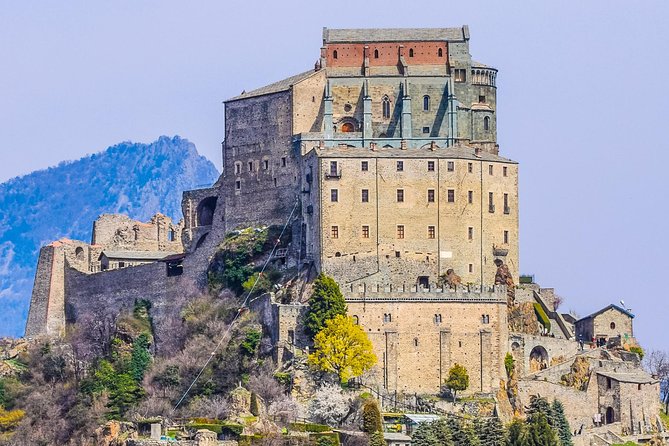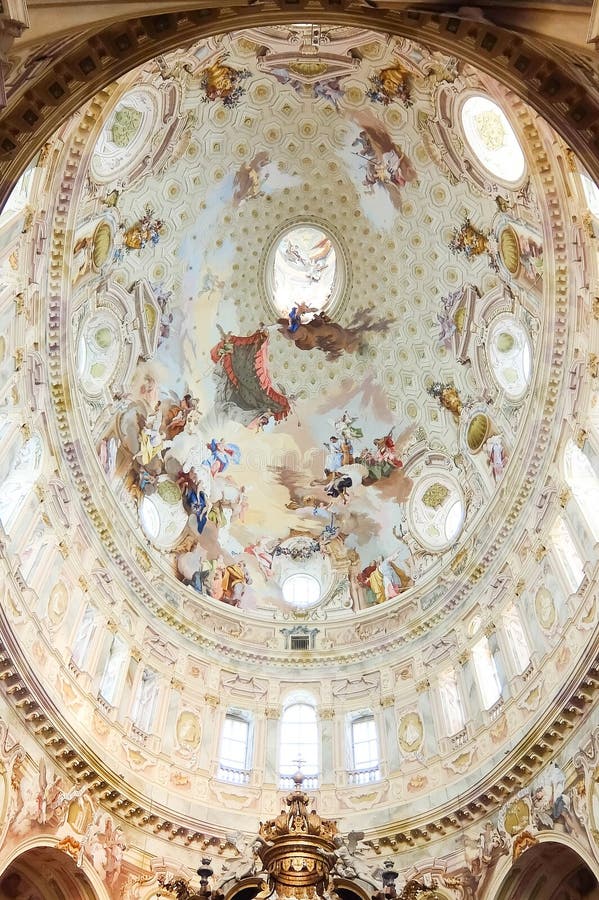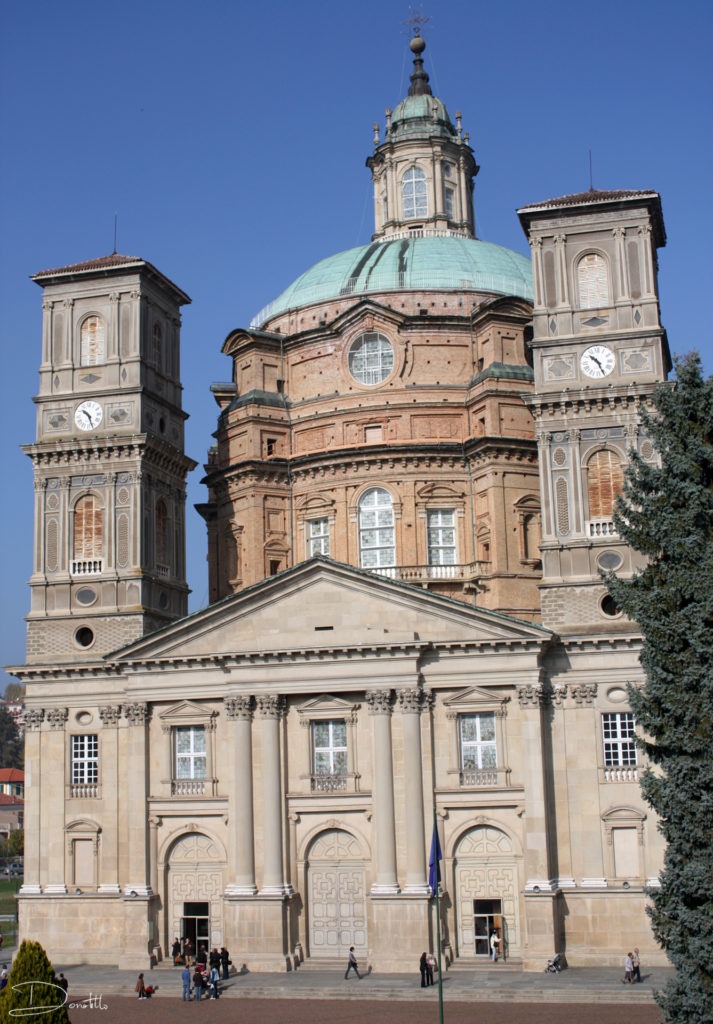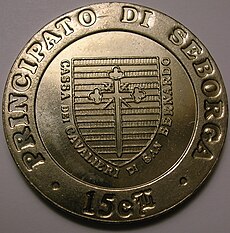Piedmont Aug 8-10, 2021
I continued on my way from Lombardy to Aosta and then returned on the 10th to fly to Sardinia on Volotea on August 10th.
Lake Orta is west of Lake Maggiore. Its scenery is characteristically Italian, while San Giulio island has some picturesque buildings, and takes its name from the local saint, who lived in the 4th century. Located around the lake are Orta San Giulio, built on a peninsula projecting from the east shore of the lake, Omegna at its northern extremity, Pettenasco to the east, and Pella to the west.
It is supposed that the lake is the remnant of a much larger sheet of water by which originally the waters of the Toce flowed south towards Novara. As the glaciers retreated the waters flowing from them diminished, and were gradually diverted into Lake Maggiore. The inaugural European Rowing Championships were held on Lake Orta in 1893.
Frequent ferry service connects towns and villages around the lake.
Basilica di San Giulio is a Roman Catholic church on the small Isola San Giulio in the center of Lake Orta, According to tradition, it was the hundredth, and last, a church founded by Julius of Novara and his brother Julian, both natives of Aegina in Greece, who dedicated their later years to the evangelization of the area around Lake Orta. Legend has it that around year 390 the saint reached the island sailing on his cloak, and then freed it from dragons (symbols of paganism); after the defeat of the monsters, he built a small church devoted to the Twelve Apostles.
Archaeological excavations inside the church found traces of an ancient basilica (5th to 6th century). Around a century later a new church was built, bigger and correctly oriented, still with a single apse. The modern church was constructed in the 12th century, is Romanesque, with a nave and two aisles.
Inside there is a precious 12th-century Romanesque ambon (sculpted in green serpentine marble) supported by four more ancient columns.
The Baroque look is from frescos representing the Trinity, the Ascent and glory of Saint Julius with Elijah, Demetrius, Philibert of Jumièges and Audenzio, all buried in the church together with the patron saint.

On the walls of the aisles there are many frescos from the second half of the 14th century and the early 16th century.
Catch a boat from in front of the main square in the town.
Ivrea, Industrial city of the 20th century WHS
The industrial city of Ivrea is located in the Piedmont region and developed as the testing ground for Olivetti, a manufacturer of typewriters, mechanical calculators and office computers. It comprises a large factory and buildings designed to serve the administration and social services, as well as residential units. Designed by leading Italian urban planners and architects, mostly between the 1930s and the 1960s, this architectural ensemble reflects the ideas of the Community Movement (Movimento Comunità). A model social project, Ivrea expresses a modern vision of the relationship between industrial production and architecture.
Founded in 1908 by Camillo Olivetti, the Industrial City of Ivrea is an industrial and socio-cultural project of the 20th century. The Olivetti Company manufactured typewriters, mechanical calculators and desktop computers. Ivrea represents a model of the modern industrial city and a response to the challenges posed by rapid industrial change. It is therefore able to exhibit a response and a contribution to 20th century theories of urbanism and industrialisation. Ivrea’s urban form and buildings were designed by some of the best-known Italian architects and town-planners of the period from the 1930s to the 1960s, under the direction of Adriano Olivetti. The city is comprised of buildings for manufacturing, administration, social services and residential uses, reflecting the ideas of the Movimento Comunità (Community Movement) which was founded in Ivrea in 1947 based on Adriano Olivetti’s 1945 book l’Ordine politico delle Comunità (The Political Order of Communities).
I looked up WHS sites and found none but an Olivetti Museum that did not seem to exist anymore. But I saw the factory from the outside!
Fruttuaria Abbey, San Benigno Canavese. This odd abbey was in the middle of the town, all its doors were locked and there was little evidence that it was used at all.
Sacra di San Michele (Saint Michael’s Abbey), Mount Pirchiarino. A religious complex on Mount Pirchiriano, situated on the south side of the Val di Susa near Turin. The abbey, which for much of its history was under Benedictine rule, is now entrusted to the Rosminians.
In Roman times a military stronghold existed on the current location, commanding the main road leading to Gaul from Italy. Later, after the fall of the Western Roman Empire, the Lombards built a fortress here against the Frankish invasions.
The crypt was built in the late 10th century by the hermit Saint Giovanni Vincenzo at the behest of the archangel Michael to whom he was particularly devoted. The cult of St. Michael, the archangel who warred with Lucifer, typically bases its churches on pinnacles or hard-to-reach places, for example, Mont Saint-Michel in France. In the following years a small edifice was added, which could house a small community of monks and some pilgrims.
Later under the Benedictine rule, guest rooms for pilgrims following the popular Via Francigena and a church monastery (1015–1035), were built. In the early 12th century, a new large, 26 m-high basement was built from the foot of the hill to its peak, on which a new church (the one still existing today) was added, including the surrounding structures.
The monastery fell into decline and was abandoned until 1835,
The church is located atop a rocky crag base and towers above the valley. The church façade leads to a staircase, the “Stairway of the Dead”), flanked by arches, niches and tombs in which, until recent times, skeletons of dead monks were visible. At the top of the 243 steps is the marble Porta dello Zodiaco, a masterwork of 12th century sculpture. The church itself is accessed by a Romanesque portal in grey and green stone, built in the early 11th century. The church has a nave and two aisles, and features elements of both Gothic and Romanesque architecture. On the left wall is a large fresco portraying the Annunciation (1505), while in the Old Choir is a triptych by Defendente Ferrari.
I had time to kill so drove about 30kms west of Turin to see this church on the top of a mountain.


On Aug 10th, I flew from Turin to Cagliari, Sardinia arriving at noon. Volotea, the airline has a very brief online check-in that takes a minute to do and must be used. I had not noticed and was charged 40€ for this.
I had the strongest premonition that something would happen to my original flight. In many ways, I have had tremendous luck all my life. Maybe it was continuing??
TURIN (pop 847,033). City, important business and cultural centre on the western bank of the Po River, It was the first capital of the Kingdom of Italy from 1861 to 1865, It is part of the famous “industrial triangle” along with Milan and Genoa, and is ranked third in Italy, after Milan and Rome, for economic strength. Turin is also home to much of the Italian automotive industry, with the headquarters of Fiat, Lancia and Alfa Romeo.
The city has a rich culture and history, is known for its numerous art galleries, restaurants, churches, palaces, opera houses, piazzas, parks, gardens, theatres, libraries, museums and other venues.
Santuario Basilica Maria Ausiliatrice. It was built in 1865-1868. According to legend, a vision of the Virgin Mary appeared in a dream to John Bosco in 1844 or 1845 and revealed the site of the martyrdom of the Turinese saints Solutor, Adventor and Octavius. The Basilica dell’Ausiliatrice was built on the site of their death. The church houses the relics of these saints.
Grattacielo Intesa Sanpaolo. Headquarters for the banking group Intesa Sanpaolo, it is the third tallest in the city. 2,000 employees as well as providing leisure facilities for the general public. At its summit, a rooftop greenhouse houses Piano35, a public restaurant, alongside a roof garden and a panoramic terrace that provides far-reaching views over the city. At its base, a 364-seat multifunctional public hall/auditorium is hung from the transfer trusses four stories above ground level.
Naturally ventilated and cooled; with a substantial amount of its power requirement to be generated from photovoltaic panels that cover the southern façade. It was awarded the LEED Platinum rating, making it the only high-rise building in Europe to hold such certification.
Gran Madre di Dio. Construction began in 1818 and was inaugurated in 1831
Piedmont Region Headquarters. This skyscraper houses the administrative offices of the Piedmont Region. Finished in 2015, the windows installed on the building were faulty, and roughly 300 of the 3,600 already-installed windows needed to be replaced and the anticipated move-in date for employees in September 2021 has been pushed out to December 2022.
Palazzina di caccia of Stupinigi.
Stupinigi Natural Park. The hunting park that belonged to a branch of the House of Savoia was given to Emmanuel Philibert, Duke of Savoy in 1563, when he moved the capital of the duke from Chambéry to Turin. The garden of the hunting lodge and the surrounding hunting estate are clearly distinguished in Stupinigi: the complex, in fact, is part of a large geometric garden, characterized by a continuous succession of flowerbeds, parterres and avenues. This park, bordered by a wall and intersected by long avenues, was designed by the French gardener Michael Benard in 1740. The hunting park, or estate, was instead constituted by the vast area of almost 1,700 hectares that extended outside the fenced park and which had been expropriated by the Duke Emanuele Filiberto di Savoia in 1563 from the Pallavicini. This area included land and woods included today in the municipalities of Nichelino, Orbassano and Candiolo.
Since 1992, woods and agricultural land surrounding Stupinigi have been preserved as the Parco naturale di Stupinigi. Included in the communal territories of Nichelino, Candiolo and Orbassano, it has an area of 17.32 km2 (6.7 sq mi) that includes a part of the region’s original lowland forest, where visitors can admire some rare plant species no longer widely found elsewhere. Wildlife includes beech martens, weasels, foxes, hazel dormice, European hares, white storks, tree squirrels and others.
ASTI
Piazza Campo del Palio. This permanent market is in an attractive yellow with a white trim building. Meat, cheese, vegies and fruit. Food stalls.
This is a very hilly country – wheat and groves of nut/fruit trees in valley bottoms and vineyards climbing every hill
Santuario della Nativita di Mari, Vicoforte. Monumental church, one of the most important in Piedmont, with an elliptical dome, the largest of this shape in the world. It has the dignity of a minor basilica. Started in 1596 by the Savoy family, the dome was finished in 1732, 74 meters high, 37.15 meters long, and 24.80 meters wide. The frescoes are six thousand square meters were then completed between 1746 and 1748 and in 1884, the bell towers and the three facades were built completed. In 2017, the body of Elena of Montenegro, second queen of Italy and consort of King Vittorio Emanuele III was transferred from Montpellier along with the body of Vittorio Emanuele III coming from the Latin Catholic cathedral of Alexandria in Egypt.


LIGURIA
Seborga. The Principality of Seborga is an unrecognized micronation that claims a 14 km2 (5.4 sq mi; 3,500 acres) area located in the northwestern Italian Province of Imperia in Liguria, near the French border, and about 35 kilometres (22 mi) from Monaco. The principality is in coexistence with, and claims the territory of, the town of Seborga.
The claim of sovereignty for Seborga was put forward in 1963 by a Seborgan former flower grower named Giorgio Carbone. He claimed to have found documents from the Vatican archives which, according to Carbone, indicated that Seborga had never been a possession of the House of Savoy and was therefore not legitimately included in the Kingdom of Italy when it was formed in 1861 during Italian unification. Carbone claimed that Seborga had existed as a sovereign state of Italy since 954, and that from 1079 it was a principality of the Holy Roman Empire. Sovereignty claims assert that Seborga was overlooked by the Congress of Vienna in its redistribution of European territories after the Napoleonic Wars.
Carbone promoted the idea of Seborgan independence as a principality, and in 1963 the town’s inhabitants elected him as their putative head of state. Carbone assumed the style and title His Tremendousness (Sua Tremendità) Giorgio I, Prince of Seborga. He formed a “cabinet” of ministers; minted a local currency, the luigino; introduced a Seborgan flag, a white cross on a blue background; and established a Latin motto, Sub Umbra Sede (Sit in the shade). Carbone’s campaign has generally not been taken seriously and is widely viewed as a ruse to attract tourists to the town, although Seborgans claim that their small state has been recognised by Burkina Faso.
Giorgio Carbone retained his ceremonial position until his death on 25 November 2009. The position of the Serborgan “monarch” is not hereditary, and since Carbone’s death, elections are held in Seborga every seven years. Carbone was succeeded by businessman Marcello Menegatto, who was elected on 25 April 2010 and crowned on 22 May 2010 as His Serene Highness (Sua Altezza Serenissima or SAS) Prince Marcello I. Menegatto was re-elected as Prince on 23 April 2017, after an unsuccessful challenge to the position by Mark Dezzani, a British-born radio DJ who had lived in Seborga for nearly 40 years.
On 12 April 2019 Menegatto resigned from his position, and he was succeeded by his wife, Nina Menegatto, who was elected by the town as Her Serene Highness Princess Nina on 10 November 2019.
Pretenders to the “throne” of Seborga have included the self-styled “Princess” Yasmine von Hohenstaufen Anjou Plantagenet, and Nicolas Mutte, a French writer.
Seborga today. Seborga’s independence claims continue today, and an official Principato di Seborga website asserts the historical arguments put forward by Carbone. Seborga claims to maintain a volunteer defense force and border guard, the Corpo delle Guardie. Participants wear a blue-and-white uniform and during the tourist season, they stand guard at sentry boxes on the unofficial border crossing on the main road into Seborga.
Seborga’s local currency, the Seborga luigino, is divided into 100 centesimos. Luigini coins circulate in Seborga alongside the euro, but no banknotes have been issued. The currency has no value outside of the town. The value of the luigino is pegged to the US dollar at SPL 1 = USD 6.00.
Population. As of 1 January 2018, Seborga had a population of 297 people, with 146 males and 151 females.
Seborga is 8kms up a narrow, swithbacking road that follows a narrow ridge. There was an accident and we must have waited for an hour to clear. 2 ambulances passed. When passing, it was a minor fender bender.
Park at the top flat space and walk down the one street. Stop at the small shop on the right to buy your passport, driver’s licence and get a passport stamp. I passed on the flag, licence plate and coins. 4€
Continue down past a tiny square to the church, and you’ve seen it all!!!
Where next? I continued north to Aosta for the day, returned to Turin, flew to Sardinia, and then back to Turin to continue my trip through the south and west of Europe.

